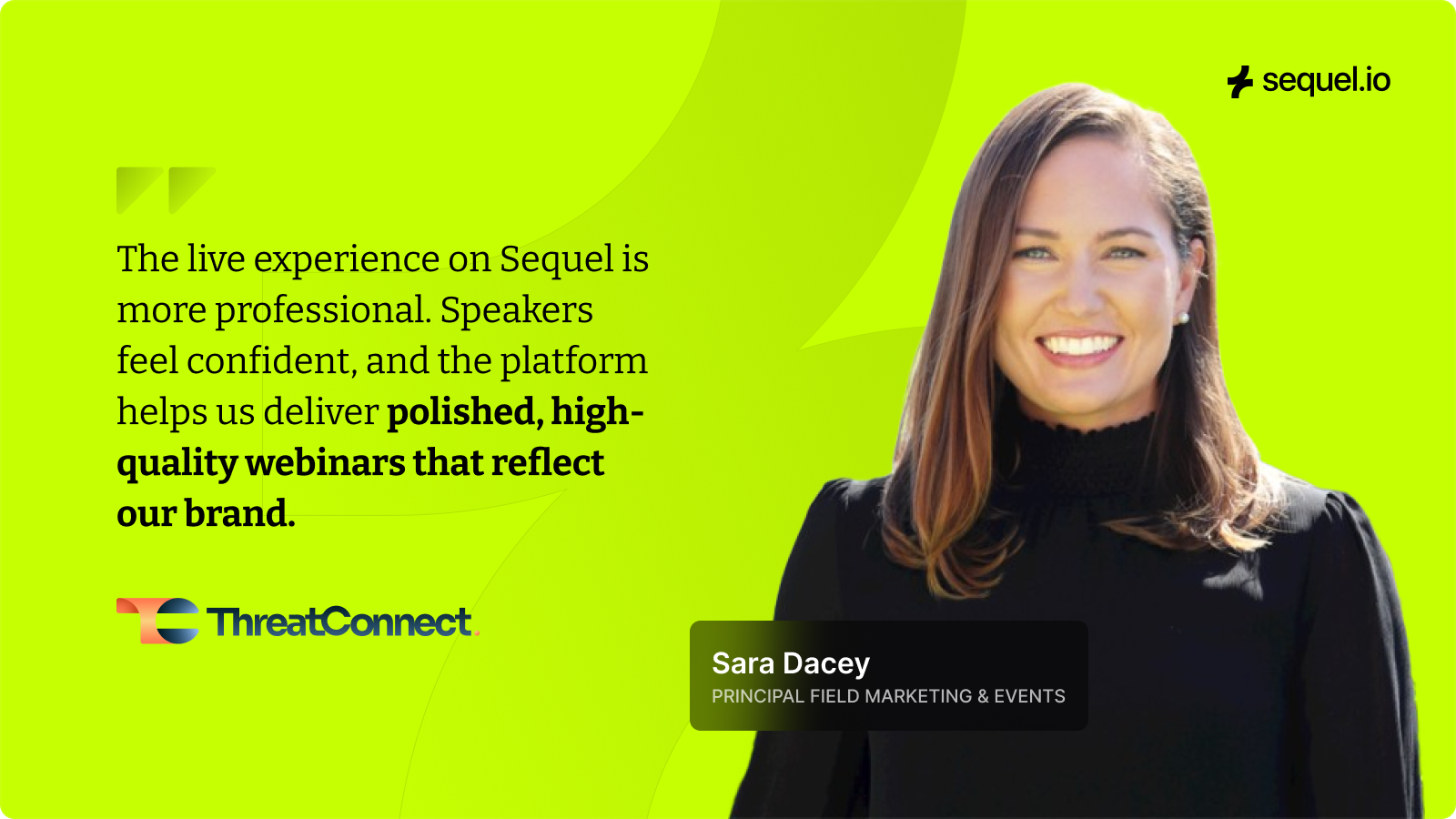How to Build a Webinar-Led Growth Engine That Drives over $2M in Pipeline & Activates Your Entire Audience
What started as a single channel for demand generation evolved into one of the most effective full-funnel growth engines in ThreatConnect’s go-to-market strategy.
Meet ThreatConnect and its legendary marketing team, including Sara Dacey, Arpine Babloyan, and Brie Merhar.
Operating in one of the most complex and competitive categories, cybersecurity, this cross-functional team is responsible for engaging technical buyers, activating customers, and supporting a sophisticated enterprise sales motion. Rather than treating webinars as one-off events, they turned them into a repeatable channel that supports every stage of the customer lifecycle.
With strategic leadership across demand generation, field marketing, and marketing operations, the team rebuilt their approach around one central goal: make webinars a meaningful, measurable contributor to growth.
Their results speak for themselves:
- Drove over $2 million in pipeline
- 51% attendance rate
- 25% of registrants engage both live and on demand
- Webinars are the number two source of influenced pipeline
In this playbook, you’ll learn how the ThreatConnect team designed their strategy, executed it with precision, and operationalized the entire motion, so every webinar contributes to real pipeline and product engagement.
Let’s dive in.
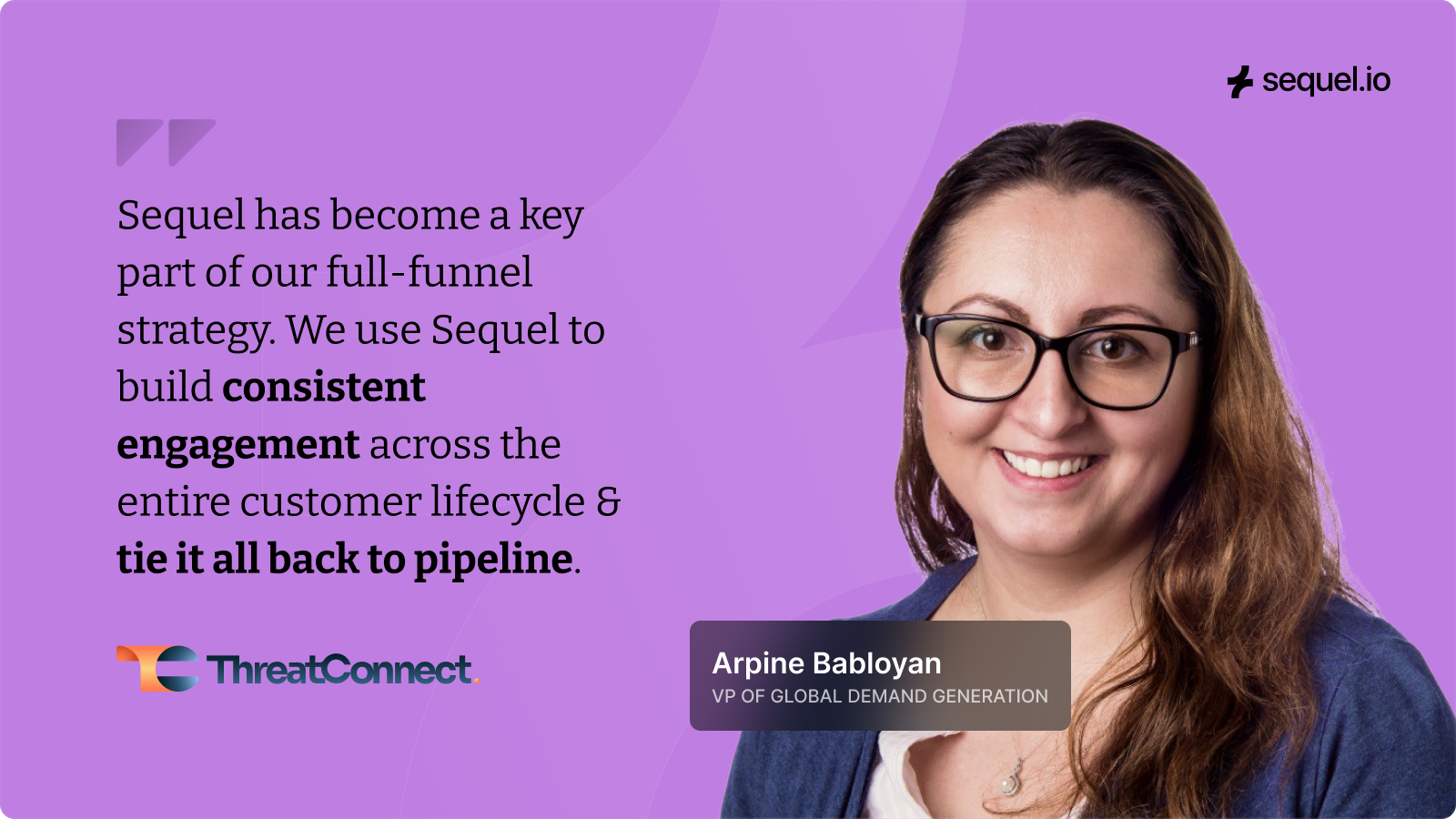
A Full-Funnel Webinar Strategy Designed for Impact
ThreatConnect didn’t just improve webinar performance; they redefined the role webinars played in their broader marketing and revenue strategy.
Instead of relying on a one-size-fits-all format, the team built a portfolio of webinars tailored to distinct stages of the customer journey. Each format served a specific purpose, with clearly defined objectives and follow-up motions.
They run:
- Thought leadership webinars to drive awareness and attract new audiences
- Monthly product demos to convert mid-funnel prospects not ready for sales
- Customer workshops and feature rollouts to boost product adoption
- User groups and meetups to strengthen customer relationships and drive advocacy
- Internal enablement sessions to prepare GTM teams for product launches and campaigns
This full-funnel approach allows the team to use webinars as an always-on channel, one that grows the database, accelerates pipeline, and creates value for both prospects and existing customers.

Rather than viewing each webinar in isolation, the team treats the entire program as a connected engine. Sessions are planned with intention, structured with conversion in mind, and measured not only by attendance but by business impact across pipeline and product engagement.
System Setup: Turning Strategy Into a Scalable Engine
A full-funnel strategy is only as good as the system behind it.
To execute across multiple webinar formats, support different teams, and accurately track results, ThreatConnect needed more than just a good content calendar. They needed infrastructure that could scale, integrate, and automate without losing visibility into performance.
Their setup centers on a tightly connected tech stack that powers every stage of the webinar workflow, from registration to attribution:
- Marketo handles form fills, lead scoring, and email nurture
- Sequel.io powers the webinar experience itself — from registration pages to hosting and real-time engagement tracking
- Salesforce captures campaign influence and connects engagement data to opportunities
- Wizia automatically generates personalized follow-up content using AI, based on registrant behavior and persona
- Outreach enables BDRs to act quickly on high-intent leads, using insights from the event to guide follow-up
By connecting these systems, the team created an end-to-end workflow that is both marketer-friendly and revenue-aligned.
Sequel plays a central role in making this system work. It allows the team to capture first-party engagement data across the audience journey, seamlessly pass that data into Marketo and Salesforce, and use it to trigger personalized follow-up. It also serves as the source of truth for on-demand content, making it easy to continue generating SQLs long after a session ends.
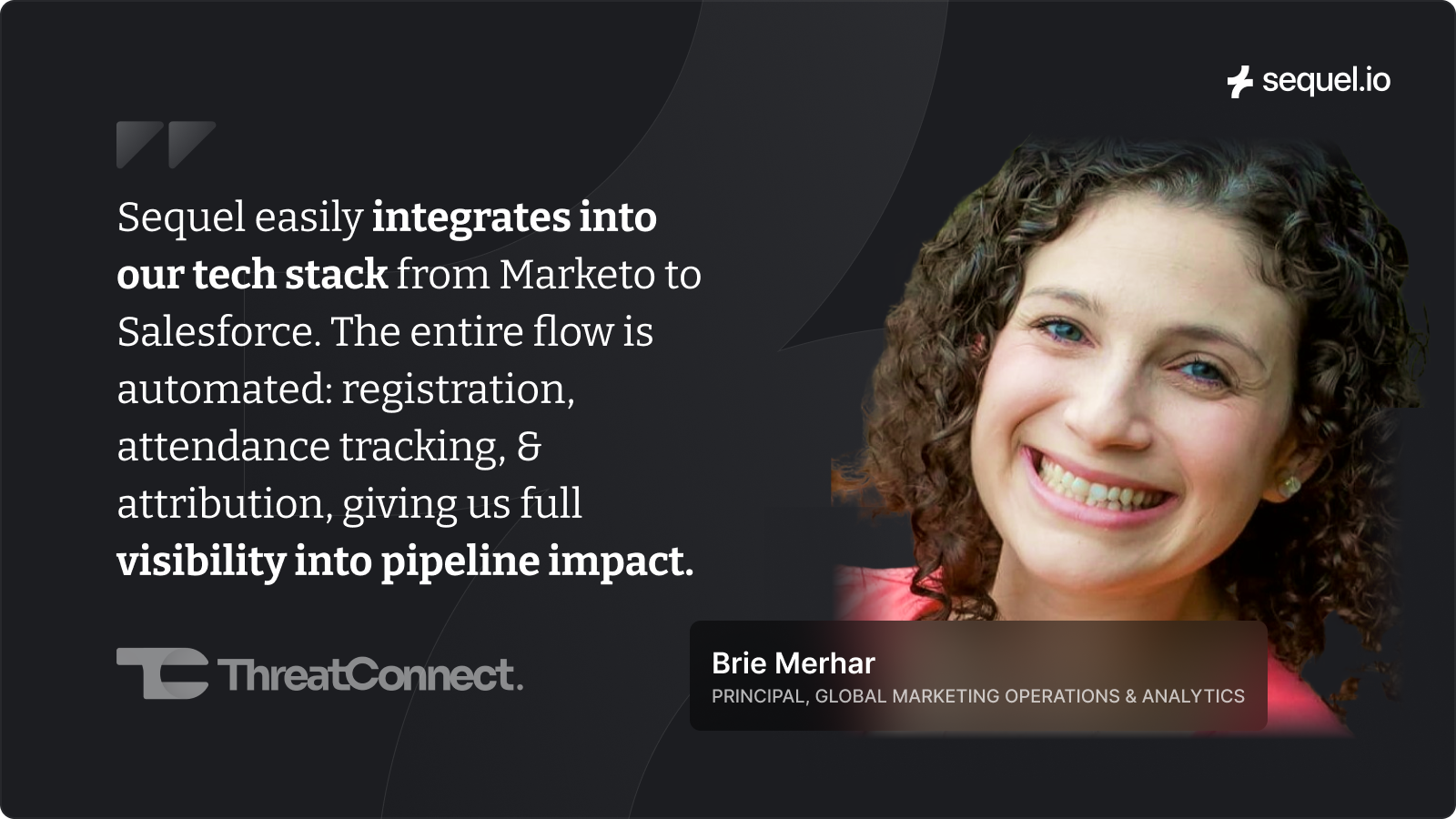
This connected infrastructure ensures that webinars are more than just events. They become a consistent source of insights, pipeline, and post-event engagement.
Planning for Timeliness and Reach
Every webinar starts with a clear goal. Is it driving net-new acquisition? Moving existing leads further down the funnel? Re-engaging customers? That goal defines the format, the content, and the call to action.
The team plans content around topics that are timely, relevant, and aligned with audience interests, especially in fast-moving areas like AI, cybersecurity trends, or evolving best practices. These aren’t thinly veiled product pitches. They’re built to educate, inspire trust, and create value, especially in top and mid-funnel stages where technical buyers aren’t ready for a sales conversation.
Webinar titles are treated like headlines. If they don’t stand out in a crowded inbox or Slack channel, they don’t ship. The team puts thought into naming, structure, and delivery — and it pays off in attention and attendance.

Speakers play a big role as well. When possible, the team invites external voices who bring credibility and fresh perspective. Internal product and CS leaders are also tapped for deep dives, especially in monthly demo sessions and customer workshops.
Promotion kicks off about four to six weeks ahead of a session. The team uses both Marketo and Sequel forms giving registrants the ability to sign up directly from the ThreatConnect domain.
Email remains the most effective driver of registrations, with social and speaker amplification serving as strong secondary channels. Because of the consistent value of their content, the team sees repeat registrants across their series, especially within their product demo program.
By the time the webinar goes live, the audience is already primed and the team is set up with the data and tools they need to execute smoothly and follow up with precision.
From Live Session to Measurable Outcomes
ThreatConnect is intentional about how each webinar is designed, delivered, and followed up on, with the goal of driving a clear outcome tied to the funnel stage it’s meant to serve.
Live sessions are built to be useful and engaging, not over-scripted. For top and mid-funnel sessions, the focus is on education and insight, not sales. For customer-facing workshops and monthly demos, the goal is to answer real questions and provide tactical guidance that helps attendees get more value from the product.
Each webinar format has its own call to action:
- For demos, the next step is often a 1:1 follow-up with sales
- For customer workshops, it might be exploring a new feature or accessing deeper product resources
- For thought leadership sessions, it’s often continued engagement with related content
Sequel plays a key role during the live session. The team uses Sequel’s resources tab to offer curated next steps, like content downloads, demo signup links, or access to a virtual product tour without interrupting the experience. This ensures CTAs are accessible but not pushy, and aligned with what the attendee actually needs.
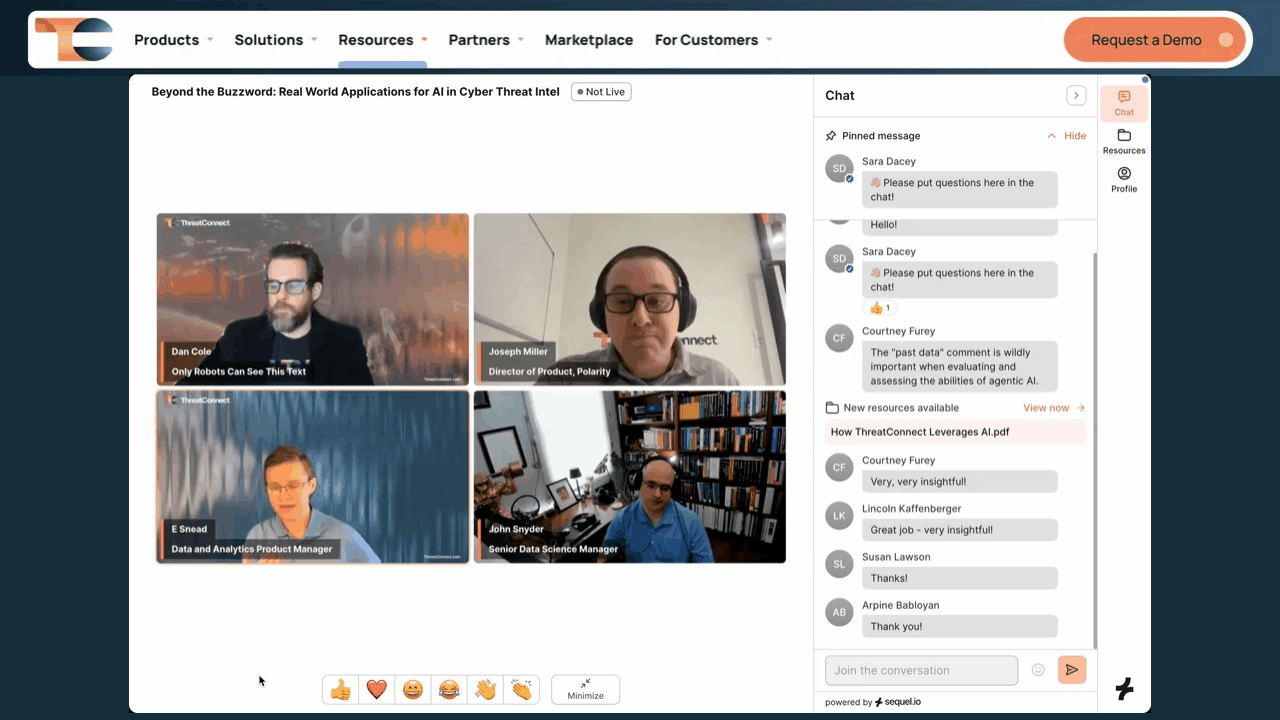
But the real magic happens after the event.
Sequel automatically sends post-event engagement data directly into Marketo and Salesforce, allowing the team to instantly qualify MQLs and track influence on open& future opportunities. That data also powers a layered follow-up process:
- Step 1: Sequel sends an automated follow-up email with session highlights and relevant resources.
- Step 2: Engagement data is pushed into Marketo, where MQLs are generated and campaign responses flow into Salesforce.
- Step 3: Wizia triggers personalized follow-up based on who attended, what they engaged with, and what persona they match. These assets are pushed into Outreach for BDRs to review and send.
- Step 4: Sequel AI is used to repurpose the session, generating landing page copy, YouTube descriptions, short-form videos, and social content that extend the life of the webinar long after the live session ends.
This tight connection between engagement, systems, and follow-up ensures that no signal is wasted and that every session contributes to pipeline, product activation, or customer expansion.
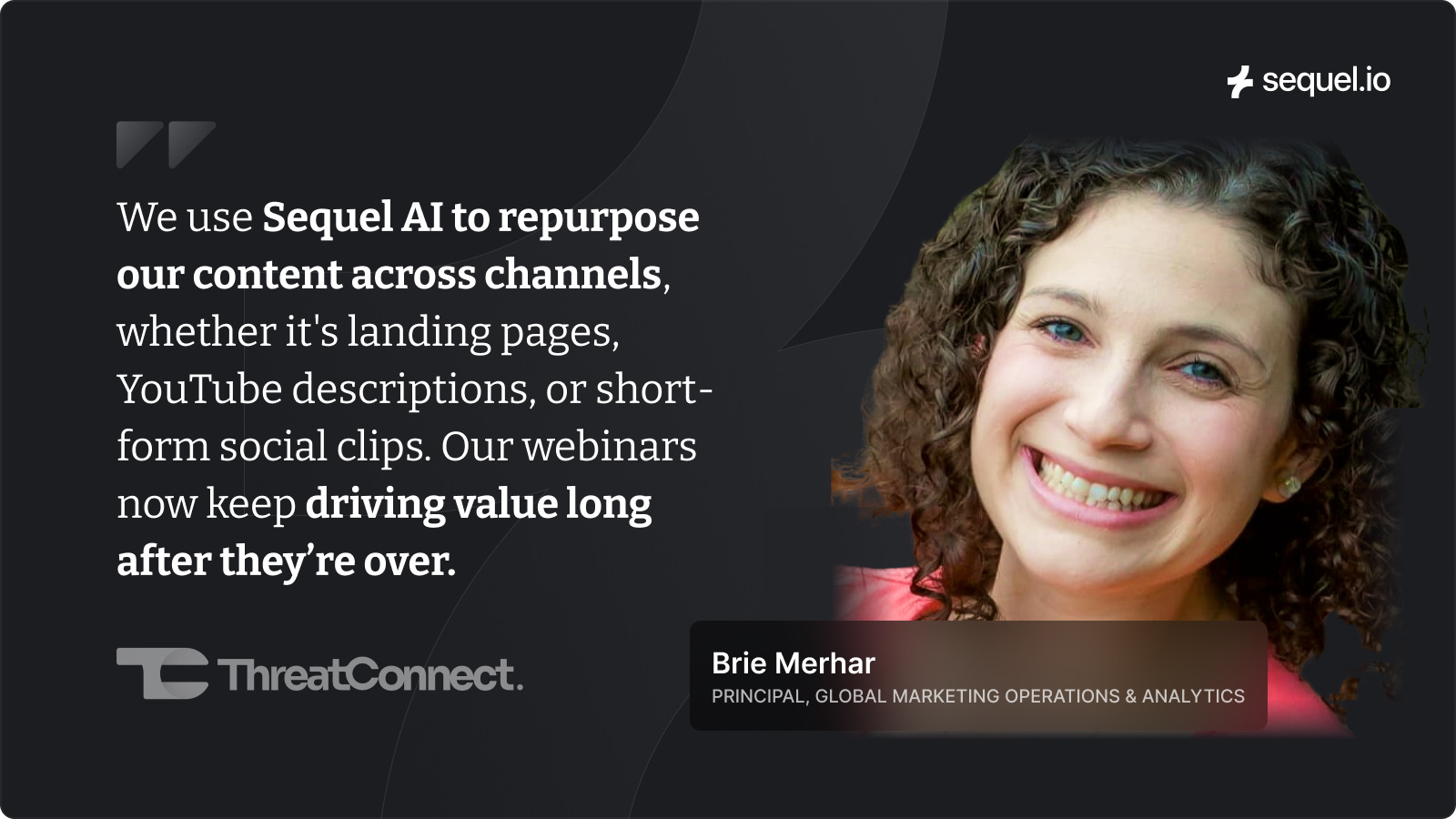
Tying It All Together
What makes ThreatConnect’s webinar strategy stand out isn’t just the results — it’s the repeatability.
By designing a system that spans the entire customer lifecycle, connecting their tech stack end-to-end, and building repeatable execution workflows, the team has turned webinars into one of their most consistent and high-performing growth channels.
Their approach is structured, but flexible. It’s tech-enabled, but driven by strategy. And most importantly, it’s focused on outcomes, not just output.
To recap, here’s what’s working:
- Webinars are aligned to different stages of the funnel, from awareness to advocacy
- Promotion and follow-up are automated and personalized across tools like Marketo, Salesforce, Wizia, Outreach, and Sequel.io
- Each session has a clear next step, surfaced live during the event and reinforced in follow-up
- Engagement data flows directly into pipeline reporting, attribution, and sales workflows
- Content is continuously repurposed using Sequel AI, keeping sessions alive well beyond the live date

And the impact speaks for itself:
- Drove over $2 million in pipeline
- Achieved a 51% attendance rate
- Saw 25% of registrants engage both live and on demand
- Webinars became the number two source of influenced pipeline
- Webinars became the number three source of SQLs from first-touch attribution
For B2B marketers looking to elevate their webinar program from tactical to transformational, this playbook is proof: it’s possible to make webinars a driver of pipeline, product adoption, and customer engagement—with the right strategy and the right tools. Want to see how you can replicate ThreatConnect’s playbook with Sequel? Find time with us to show you how!
